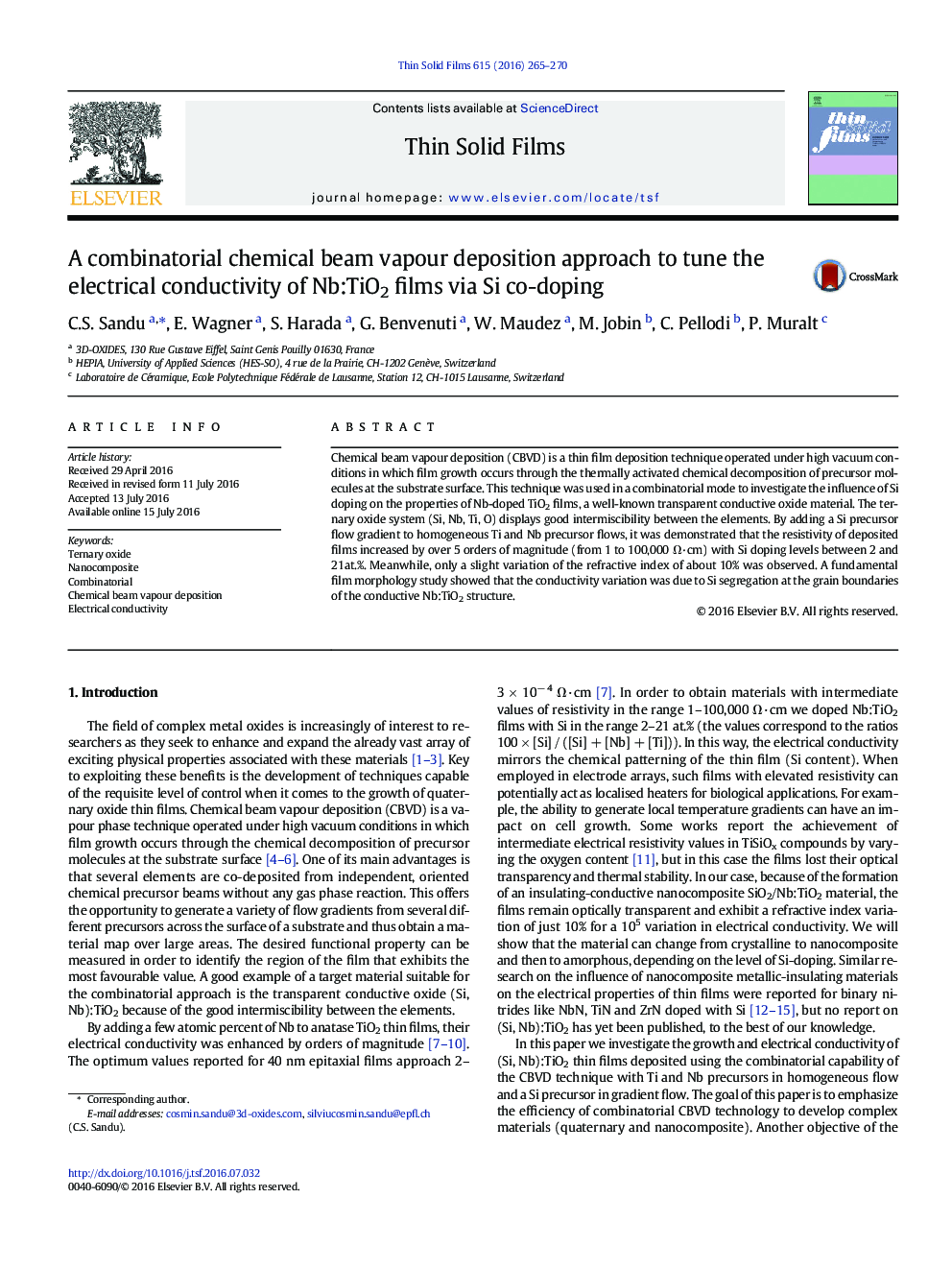| Article ID | Journal | Published Year | Pages | File Type |
|---|---|---|---|---|
| 1663879 | Thin Solid Films | 2016 | 6 Pages |
•Ternary oxide: (Si,Nb) doped TiO2 films by chemical beam vapour deposition.•Combinatorial setup allows variation of Si content between 2 and 21 at.%.•Conducting-insulating nanocomposite material•Electrical conductivity varied by 5 orders of magnitude.•Correlation between nanostructure and electrical properties
Chemical beam vapour deposition (CBVD) is a thin film deposition technique operated under high vacuum conditions in which film growth occurs through the thermally activated chemical decomposition of precursor molecules at the substrate surface. This technique was used in a combinatorial mode to investigate the influence of Si doping on the properties of Nb-doped TiO2 films, a well-known transparent conductive oxide material. The ternary oxide system (Si, Nb, Ti, O) displays good intermiscibility between the elements. By adding a Si precursor flow gradient to homogeneous Ti and Nb precursor flows, it was demonstrated that the resistivity of deposited films increased by over 5 orders of magnitude (from 1 to 100,000 Ω·cm) with Si doping levels between 2 and 21at.%. Meanwhile, only a slight variation of the refractive index of about 10% was observed. A fundamental film morphology study showed that the conductivity variation was due to Si segregation at the grain boundaries of the conductive Nb:TiO2 structure.
